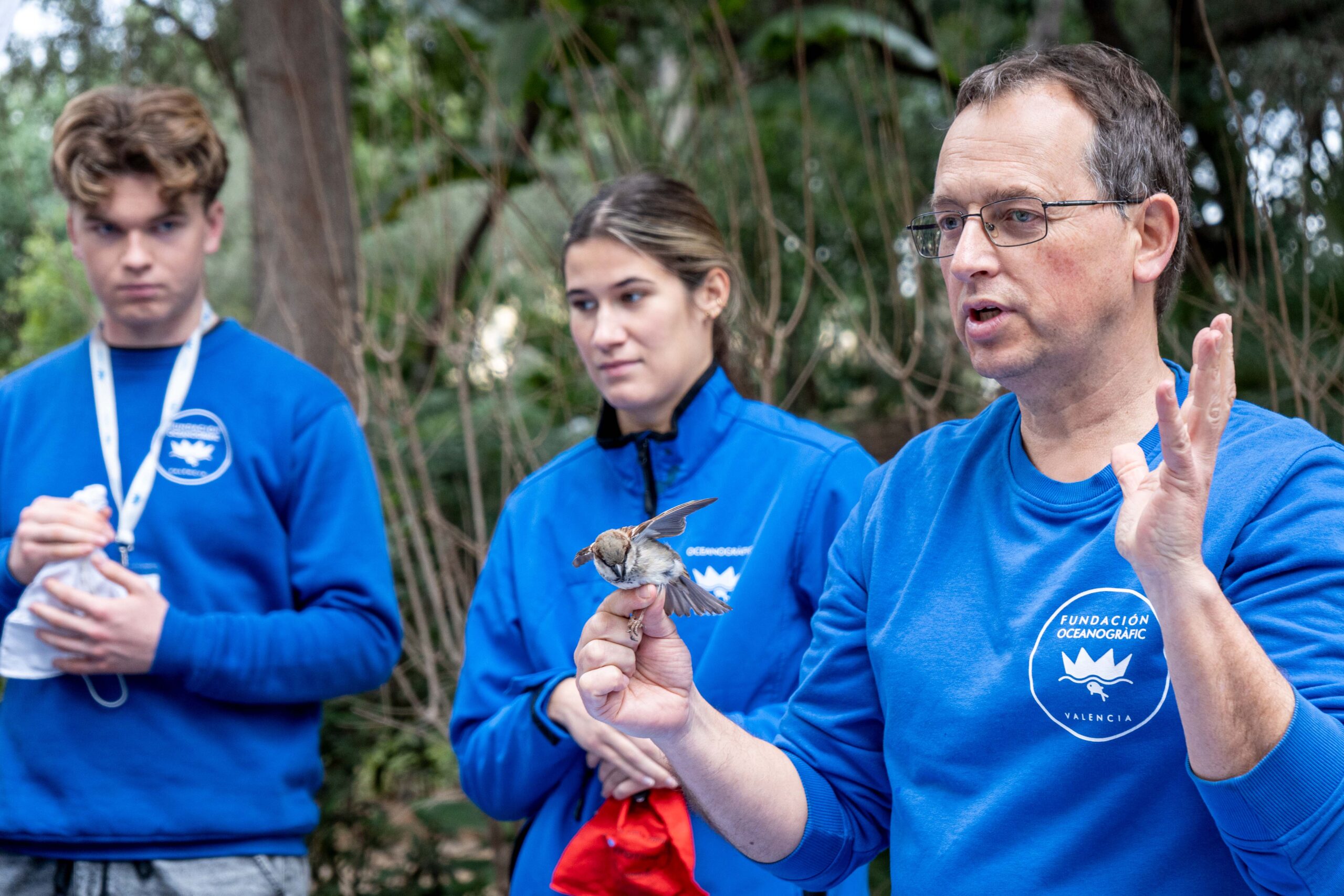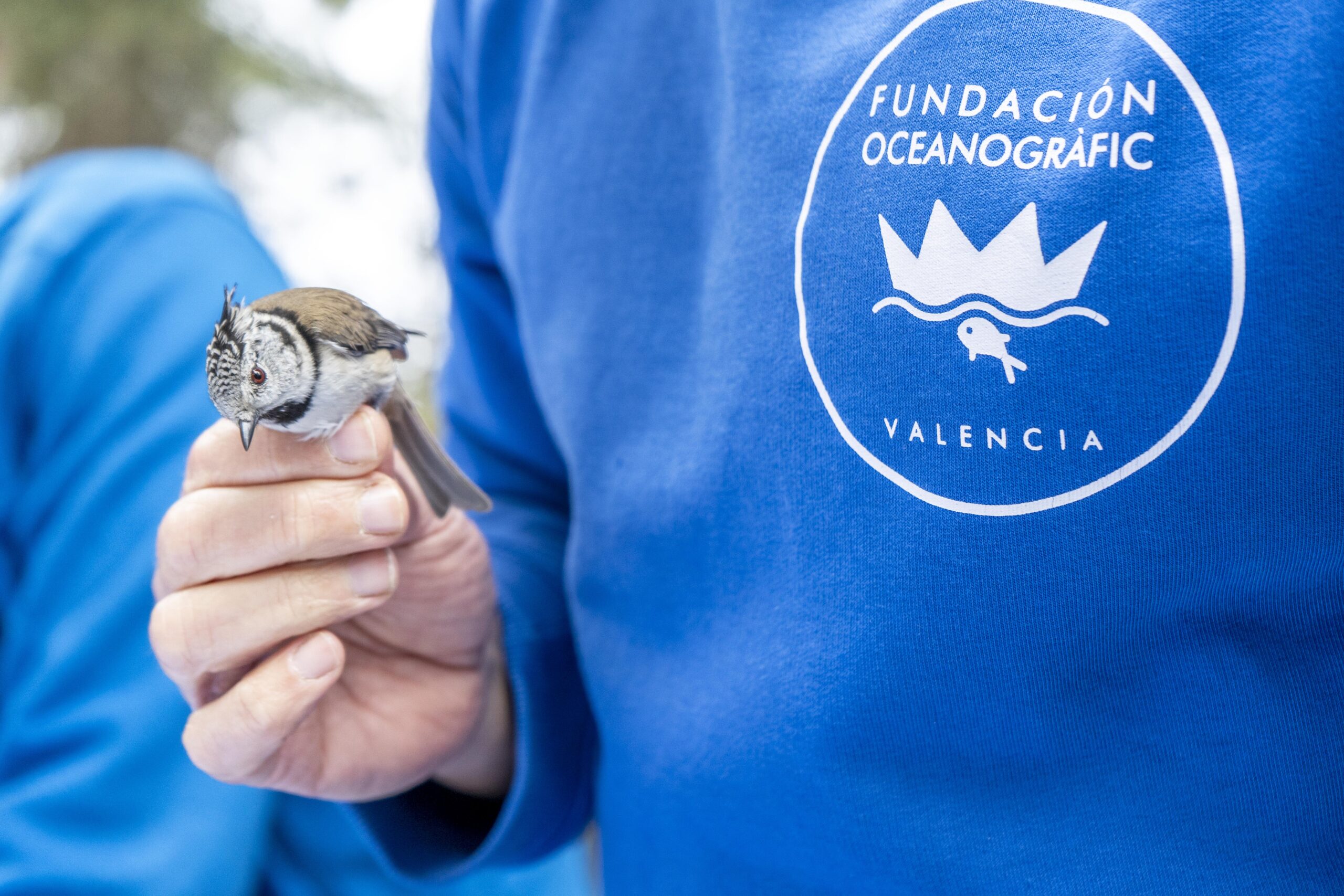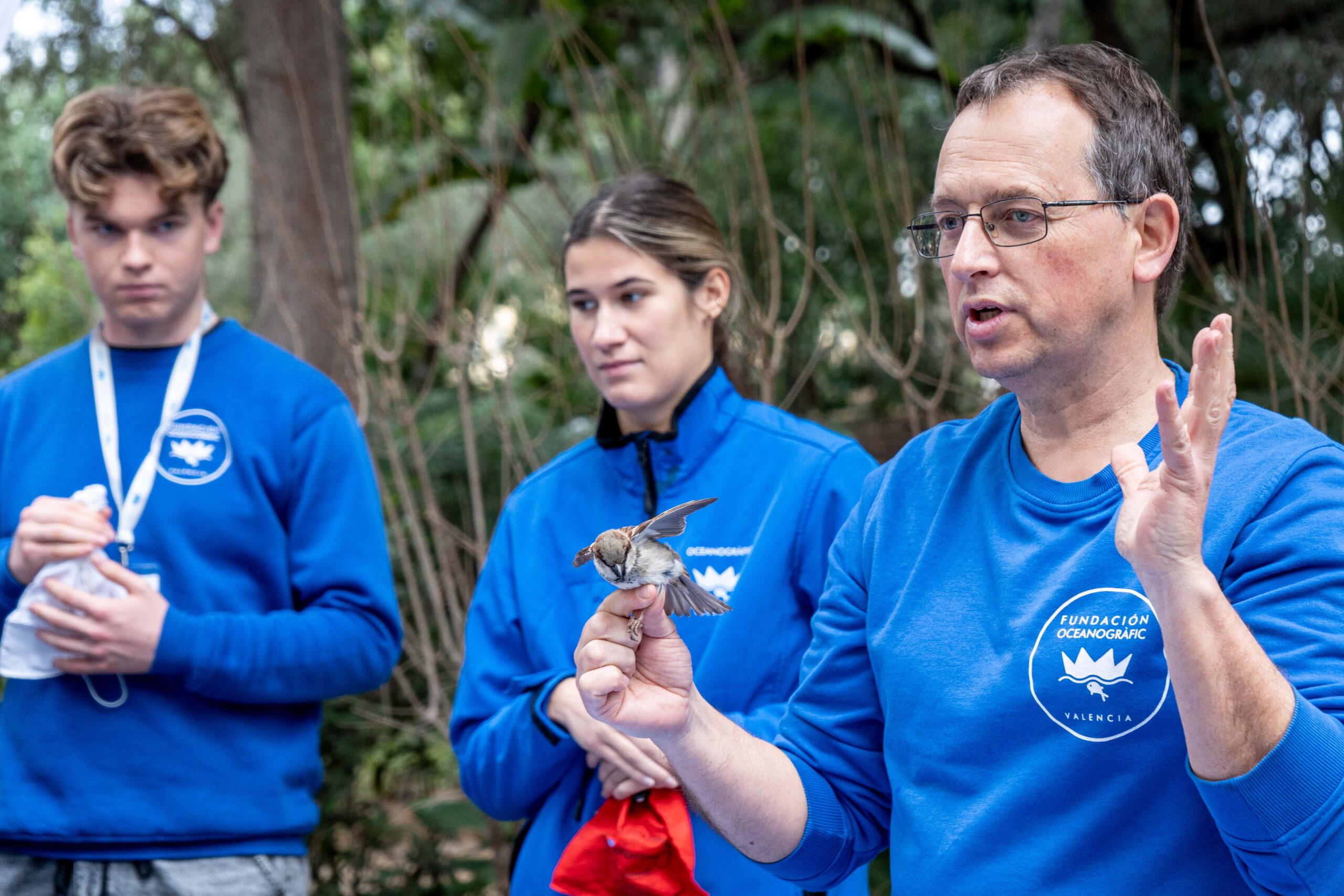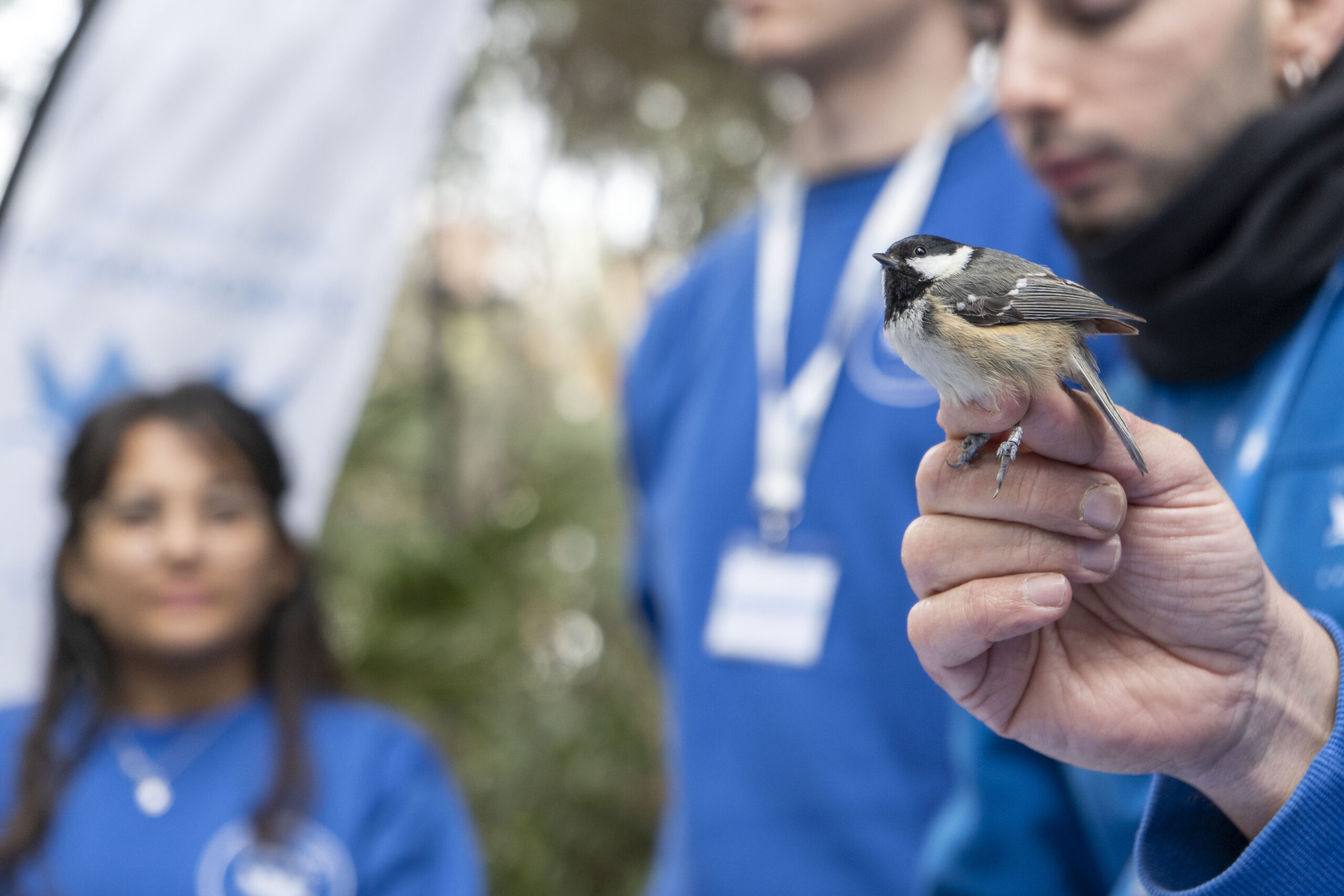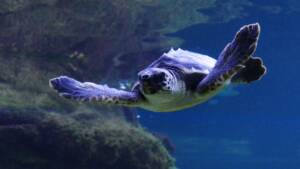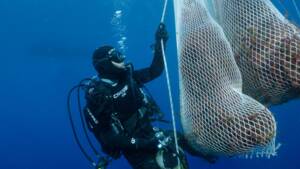The Oceanogràfic Foundation has incorporated the scientific ringing of birds into its educational and environmental awareness activities. This practice, developed by the Education Department, is aimed at both schools and companies interested in learning about the methods of studying and conserving wildlife.
Scientific ringing is a tool used in ornithological research and consists of placing a light, numbered metal ring on the bird’s leg for later identification. Thanks to this technique, data can be obtained on the migration, longevity, reproduction, and conservation status of the species.
The activity can only be carried out by accredited ringers, and the data obtained is incorporated into national and international scientific databases, which allows the monitoring of birds over time and their comparison with other European populations.
Japanese nets are used for capture, a system widely used in field studies that allows birds to be caught safely. Once the necessary measurements and data, such as weight, wing size, or species, have been recorded, the specimens are released at the same point. A process that is developed following protocols that guarantee the welfare of the animal.
The Oceanogràfic Foundation has adapted this research technique to the educational field with the aim of bringing science closer to the general public. The workshops are carried out in natural spaces such as l’Albufera, La Muntanyeta dels Sants, the Turia Natural Park, in Manises, the l’Hort de Trénor Park, in Torrent, or the Benicalap park, in Valencia, where participants observe the ringing tasks and learn about the main ecological values of the wetland.
For Pedro del Baño, ornithologist and environmental educator at the Oceanogràfic, “the sessions allow us to understand in a practical way how the information we obtain in each ringing contributes to the study of bird populations and the conservation of ecosystems.”
The groups participate in the direct observation of the process and in complementary activities, such as data recording and species identification.
The activity is also offered to companies interested in integrating environmental actions into their social responsibility programs. Within this framework, the company Future Fibres participated last week in a conference that combined ringing with interpretive routes and environmental cleaning tasks.
The sessions also included guided tours of the rice fields, explanations about the species present, and workshops aimed at understanding local biodiversity. The objective is for the participants to learn about the scientific methods used in the conservation of fauna and understand the importance of preserving natural habitats.
Scientific ringing, in addition to providing valuable information for research and environmental management, is consolidated as an educational tool.
Its integration into the programs of the Oceanogràfic and its Foundation reinforces the connection between science and outreach and promotes a greater understanding of the functioning of ecosystems and the measures necessary to protect them.

